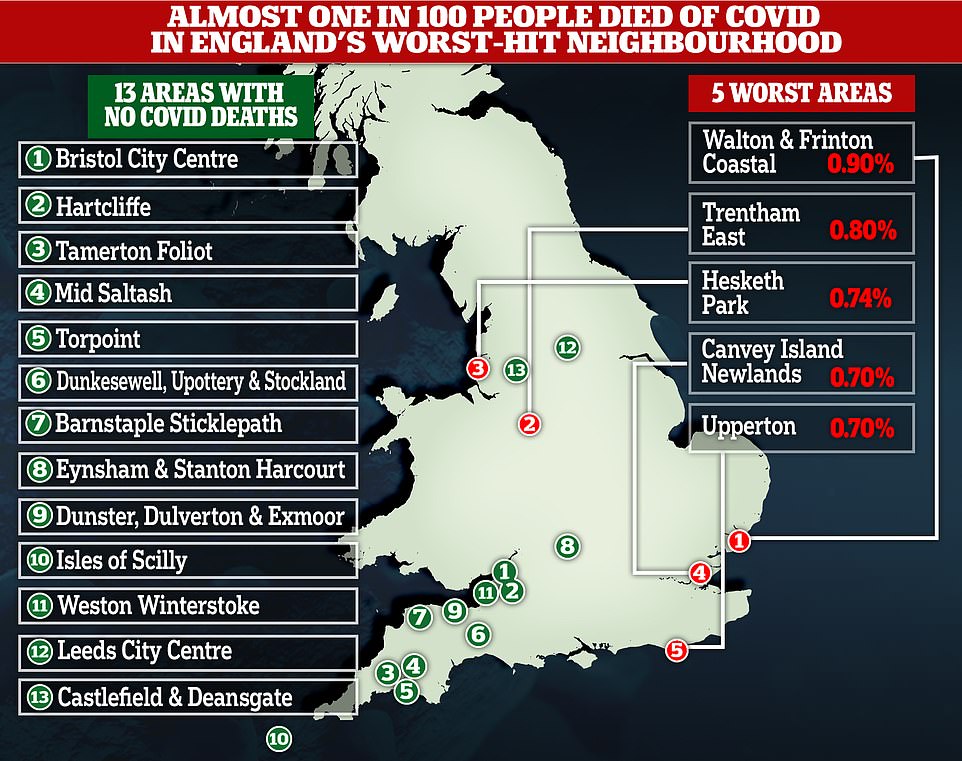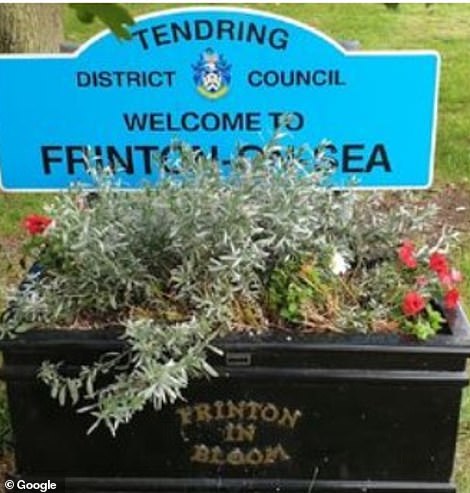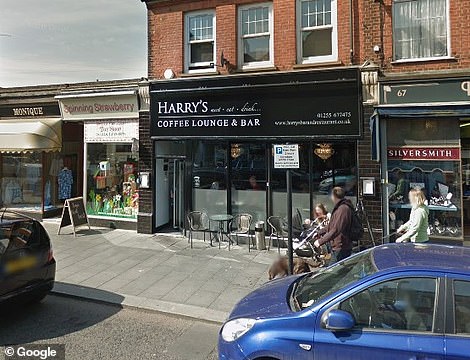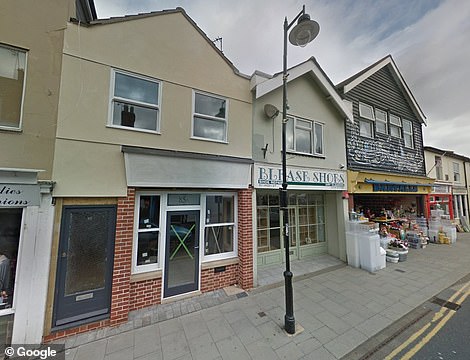Almost one in a hundred people have died from Covid in England’s worst-hit neighbourhood, MailOnline analysis revealed today.
Walton and Frinton Coastal, in Essex, recorded 70 deaths from the disease among its 7,700-odd residents (0.90 per cent) during the first and second waves, according to the Office for National Statistics.
Councillors said the high death toll was likely linked to outbreaks in its six care homes. Official figures show they saw 39 Covid fatalities by April 2021.
They also suspected more people in the local area have underlying health conditions than the national average and there are more older residents, meaning their population was more vulnerable to the virus.
The seaside neighbourhood is a place divided. Affluent Frinton-on-Sea has a high street lined with independent cafes and bric-a-brac shops, with house prices around £370,000. But just a 10 minute walk away, Walton-on-the-Naze has fallen on hard times with many shops on its high street now boarded up, and the average house price down to £230,000 — below national average.
ONS data revealed that among England’s five worst-hit neighbourhoods, four were on the coast. For comparison, there were 13 districts that had recorded no Covid fatalities which were mostly scattered across the South West, where the virus has struggled to gain a foothold.
More than 150,000 Britons have died from Covid since the pandemic began, with the UK having one of the worst death tolls among developed nations.
Experts say this is down to poorer health in the UK population than other developed countries. But they also pointed to reporting differences, arguing Britain had marked down many deaths as from the virus when this was not the case.

There are 13 areas in the country that have recorded no deaths from Covid, based mostly in the South West where the virus has struggled to gain a foothold. England’s worst-hit areas, however, tended to be coastal

Of the 70 Covid deaths recorded in Walton and Frinton Coastal, in Essex, during the first and second waves as many as 39 were linked to care homes, or 55 per cent. Pictured above are the homes recording Covid deaths. The neighbourhood is shaded in red


The seaside neighbourhood is a place divided. Affluent Frinton has a high street lined with independent cafes and Bric-a-brac shops. But in Walton-on-the-Naze most areas are boarded up. Pictured above are the welcome signs for the two towns


Pictured is the high street in Frinton (left) and Walton (right). While Frinton’s is lined with independent cafes and shops, in Walton many shops are already boarded up

There were 39 deaths in the area linked to care homes during the first and second waves. The outbreak in Blenheim care home (pictured) hit local headlines. A CQC report found the home was ‘ill-prepared’ for the pandemic
MailOnline’s analysis is based on Office for National Statistics figures looking at all the virus fatalities from between March 2020 to April 2021.
Deaths were then compared across England’s 7,000-plus neighbourhoods, known to researchers as MSOAs.
The data revealed that Walton and Frinton Coastal had seen the highest proportion of its residents succumb to the disease.
As many as 39 of these fatalities were linked to care homes, according to figures from the inspector of the adult healthcare sector the Care Quality Commission.
Brenalwood care home, in Walton, had the most fatalities after 10 of its residents died from the virus.
Read House, in Frinton, recorded eight Covid deaths, while Delamer care home and Blenheim care home both registered seven. Anchor Lodge retirement home saw four Covid deaths, and Lodge care home had three.
The outbreak in Blenheim care home hit the local headlines last year after a number of residents died from the disease.
A subsequent CQC inspection found the home, which is listed as ‘needs improvement’ online, was ‘ill-prepared’ for the Covid outbreak.
Regulators said: ‘When the pandemic came, the service was ill-prepared to manage the outbreak, resulting in significant consequences for the service, people and staff. The service had a high number of infections and deaths due to Covid.’
Its owner Regal Care Trading admitted in November ‘a few residents’ had died from the virus in the home and at a local hospital. They added that the home was working with the CQC and local NHS services to make improvements.
Councillor Nick Turner told MailOnline that the high number of Covid deaths in the area was likely down to care homes.
He said he was aware care home staff worked in several different homes in neighbouring Clacton, and that this ‘was likely’ also the case in Frinton and Walton at the start of the pandemic. This risked a Covid-infected member of staff spreading the disease to several homes.
Mr Turner added: ‘It is [also] people with underlying health problems. Obesity is a major player, age is a major player, care homes are a major player.’
The figures showed across England’s five worst-hit areas, four were on the coast. They were Walton and Frinton Coastal (0.90 per cent of residents died from Covid), Hesketh Park, in Sefton, (0.74 per cent), Canvey Island Newlands, also in Essex (0.7 per cent) and Upperton, in Eastbourne (0.7 per cent).
Trentham East, in Stoke-on-Trent, was the only worst-hit area in an inner city (0.8 per cent).
Official figures also revealed there were 13 areas that had not recorded any deaths from Covid during the first and second waves of the pandemic.
As many as 10 were in the South West. These included two areas in Cornwall (Mid Saltash and Torpoint), two in Bristol (Bristol City and Hartcliffe), three in Devon (Tamerton, Dunkesewell and Barnstaple Sticklepath), two in Somerset (Dunster, Dulverton and Exmoor and Weston Winterstoke), and the Isles of Scilly.
The three areas not in the South West were: Leeds City Centre; Castlefield in Manchester; and Eynsham and Stanton Harcourt in Oxfordshire.
Professor Kevin McConway, a statistician at the Open University, warned that the number of Covid deaths in each neighbourhood were not very large in total, meaning they could easily be affected by local outbreaks.
He told MailOnline: ‘So if, say, there was a bad outbreak in just one care home in an area, that would put up its total Covid deaths to a level that might move it a long way. So in a sense none of these numbers is very stable.
‘I’m not saying they are incorrect, just that any patterns that can be found in them could possibly just be there by chance, rather than for a good reasons that you can explain in terms of other things.’
Source link : https://www.dailymail.co.uk/news/article-9868273/Almost-one-people-died-Covid-Englands-worst-hit-neighbourhood.html











